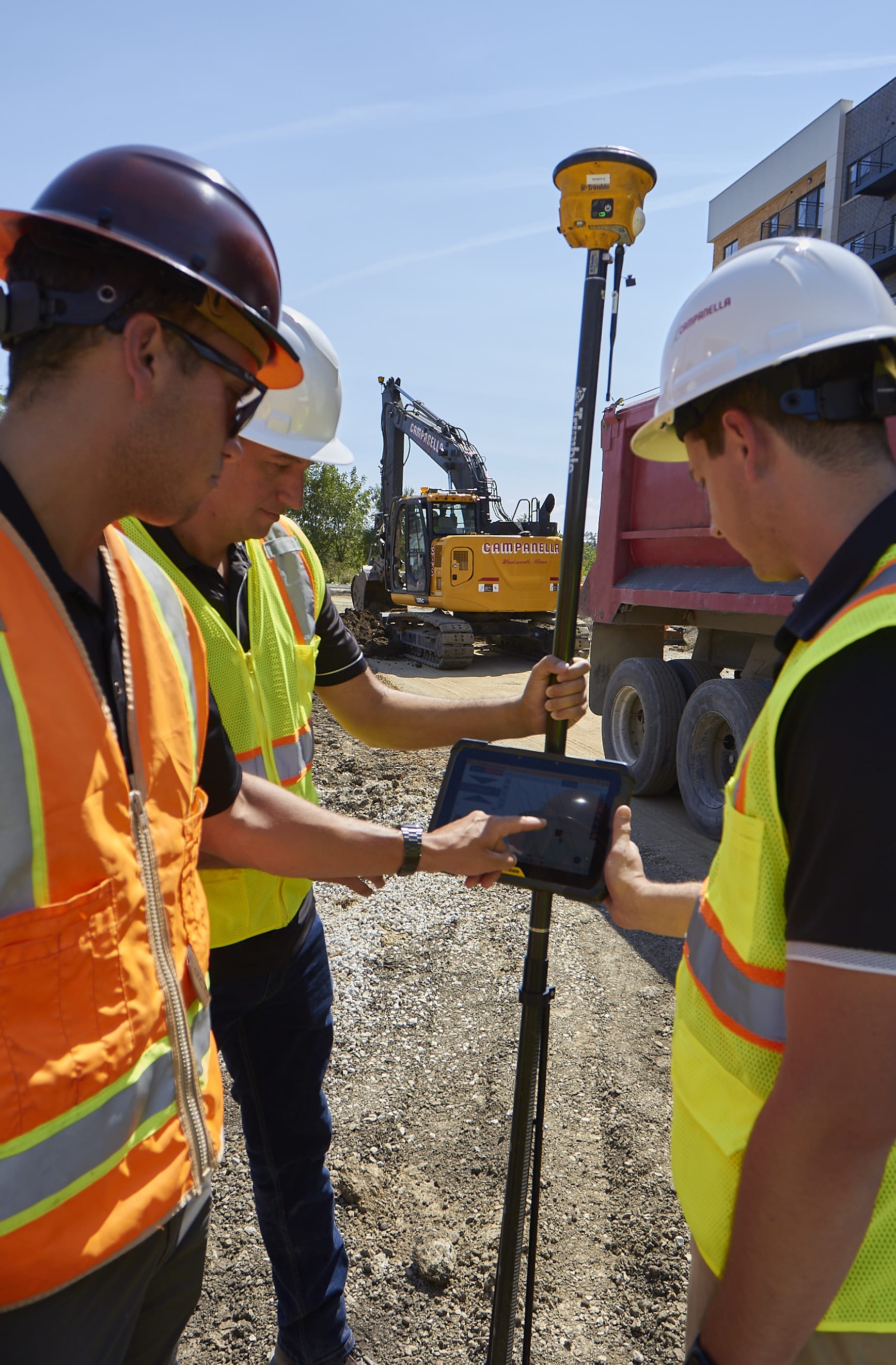Ten ways contractors can gain a competitive edge by leaning into technology
In a recent Trimble survey, 54% of respondents polled identified the labor shortage as this year’s biggest challenge. And while the industry is still seeing a steady stream of work, traditional methods that bog down productivity will only serve as quicksand, requiring more resources and time than today’s contractors can afford to take.
Additionally, tech advancements tailored to the construction industry — particularly earthmoving work — continue to open new doors for contractors of all sizes to attract opportunities via simplified planning, productivity and performance. (And ultimately, better profits.)
Technology is proving invaluable in empowering contractors to deliver on today’s unforgiving specs and timelines and winning repeat business in a multitude of ways. Here are 10 technology benefits that contractors can no longer afford to ignore:

The data exchange
There’s been a call in recent years to collect and utilize data to work smarter, faster and more efficiently — particularly from the cloud — for more connected data that translates into actionable progress and business scalability. In fact, 59% of survey respondents from a recent Trimble survey believe technology integration will be one of the biggest themes across the industry.
This instant exchange of data automatically facilitates near-real time collaboration from the office to the field and back, mitigating the need to wait for site walks to confirm progress. Files and progress can be updated in near-real time, so machines have all the latest information. This makes contractors less dependent on humans to waste time staking and marking, for faster, more accurate results.
Mixed-fleet momentum
The continued adoption of ISO mixed fleet standards has greatly simplified data sharing across machines, and will continue to do so. A number of major industry players — including Trimble, Topcon, John Deere and Caterpillar — are collaborating on Part 4 of ISO 15143, which specifies system architecture for the exchange of data related to the use of earth-moving machinery.
Contractors can expect this to make it easier for them to manage their mixed fleets, cutting out extraneous work and steps that inundate crews and create concern for stakeholders.

AI, automation and autonomy
In the same recent Trimble survey, 59% of respondents said that artificial intelligence (AI) and machine learning (ML) are two of the industry’s key technology tools of late. This becomes a golden opportunity for any contractor looking for more and better ways to do more with less.
Whether it’s automating processes, improving decision-making or enhancing team productivity, AI/ML can improve data management and the opportunity to gain insights in real-time or near real-time.
Embedded AI algorithms will also extend the value of emerging augmented reality and reality capture tools and techniques. Such innovations deliver an interactive digital twin for everyone on a project to plan, verify and measure performance and quality faster, and with fewer resources. And less waste.
X marks the spot
GNSS is so ingrained in the surveying and construction space that many don’t realize it’s an evolving technology. Through improved software, it’s becoming more accurate and better able to handle environmental signal challenges while positioning stays on target.
GNSS positioning performance will only get better from here, with the ability to obtain and maintain precision position and heading in a range of solutions, in a wide variety of applications.

Enhanced accuracy and reduced errors
Technologies like machine control and drones utilize precise measurements and data collection, minimizing errors and rework. This accuracy ensures higher-quality outcomes and reduces costs associated with mistakes, making services more reliable and attractive to clients.
Better collaboration and communication
Tools such as cloud-based platforms enable real-time collaboration among project stakeholders — including architects, engineers and contractors. Improved communication leads to better coordination, fewer misunderstandings and smoother project execution. Not to mention making the bidding process easier and more accurate.

Increased site safety
Safety technologies such as site monitoring and motion inhibit systems help prevent accidents and costly damage to structures or underground utilities within avoidance zones.
A strong safety record can be a significant selling point to clients who prioritize worker welfare and risk management. While a poor one can permanently blacklist a contractor, not to mention prove catastrophically costly with fines or the risk of injuries or fatalities for crews or the general public.
Sustainability and innovation
Green building technologies and sustainable construction practices are becoming a requirement rather than a nice-to-have for today’s clientele. By adopting these technologies, contractors can offer innovative solutions that meet environmental standards and appeal to eco-conscious customers, who are selecting contractors who can check their boxes. Without these tools in their arsenal, today’s contractors risk being passed by.
Subscription pathways
Last year, purchasing technology solutions using a subscription became one of the most important — and most popular — adaptations in the construction industry. The model provides a way for contractors of all sizes to maximize budgets and technology investments — while leveling the playing field between the larger and smaller contractors.
Subscriptions can include customized support (e.g., installation, upgrades, repairs) for machine control hardware/software, site positioning systems, correction services and office software for a fixed and lower, predictable monthly fee. For many contractors, subscriptions simplify the tracking of costs and equipment, for a more predictable and stable cash flow.
Today’s jobs demand more than traditional methods can deliver

Investing in construction technology provides significant competitive advantages for civil contractors. Leveraging these technologies empowers them to deliver projects more efficiently, accurately and safely, while offering innovative solutions that win more business by building a reputation for quality, reliability and forward-thinking practices.